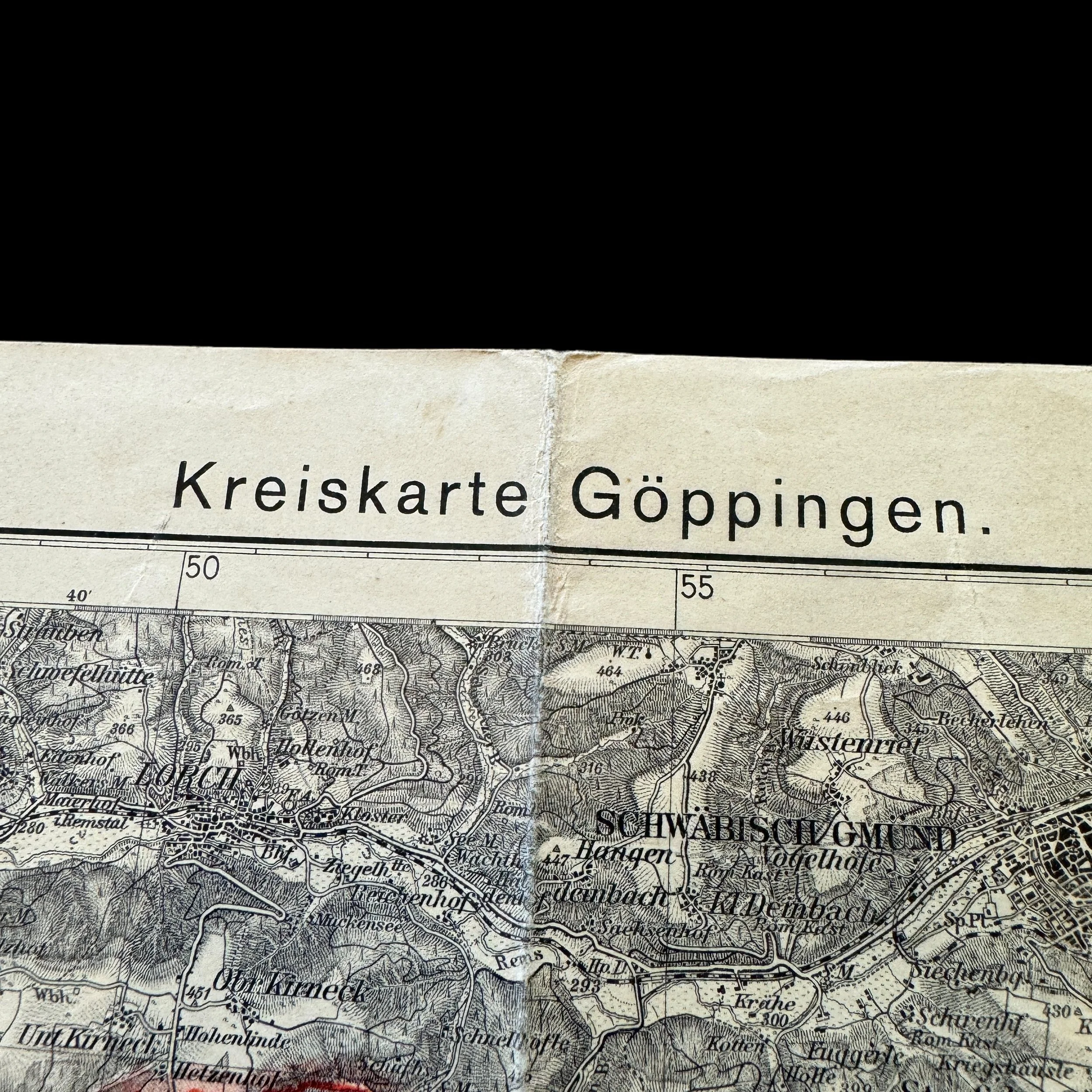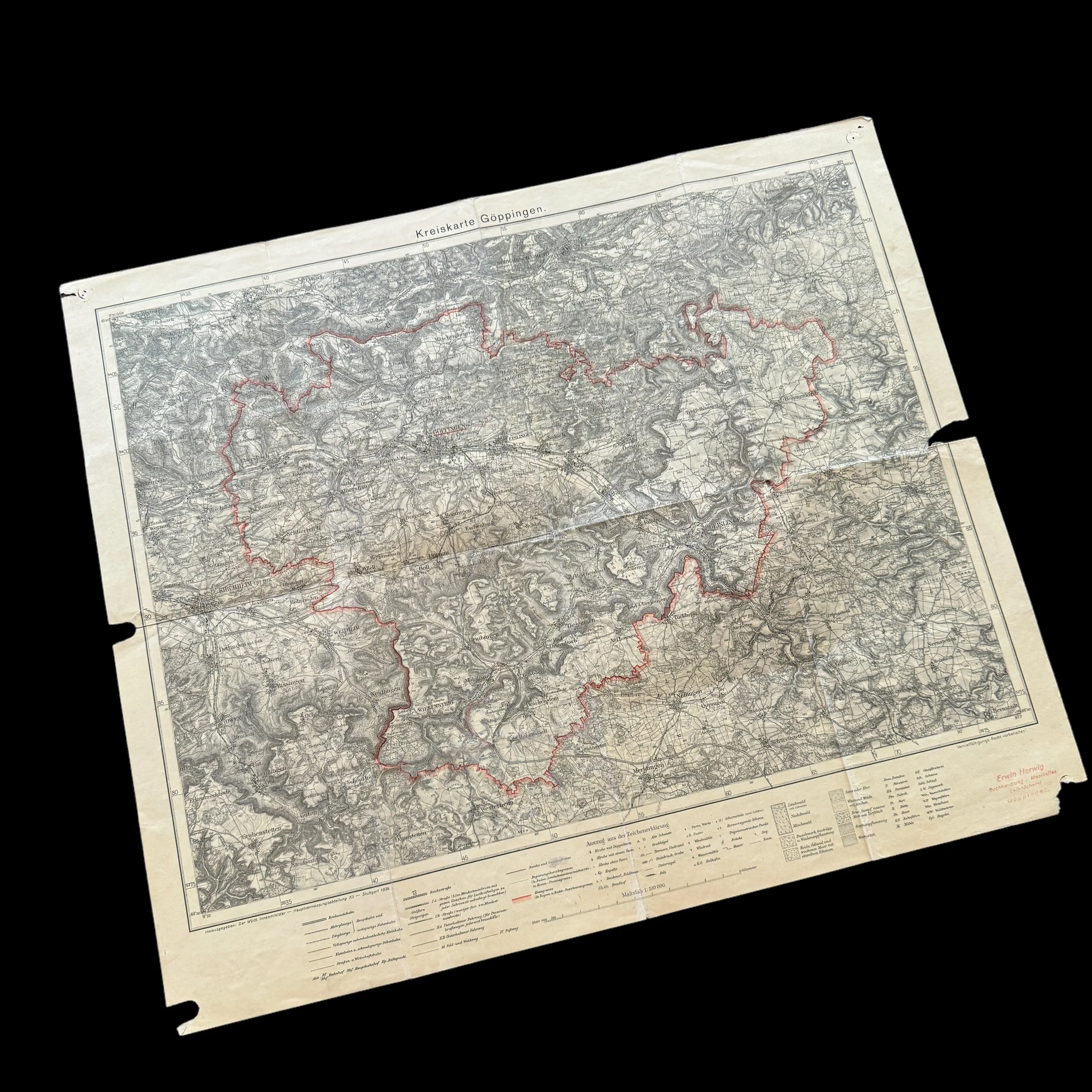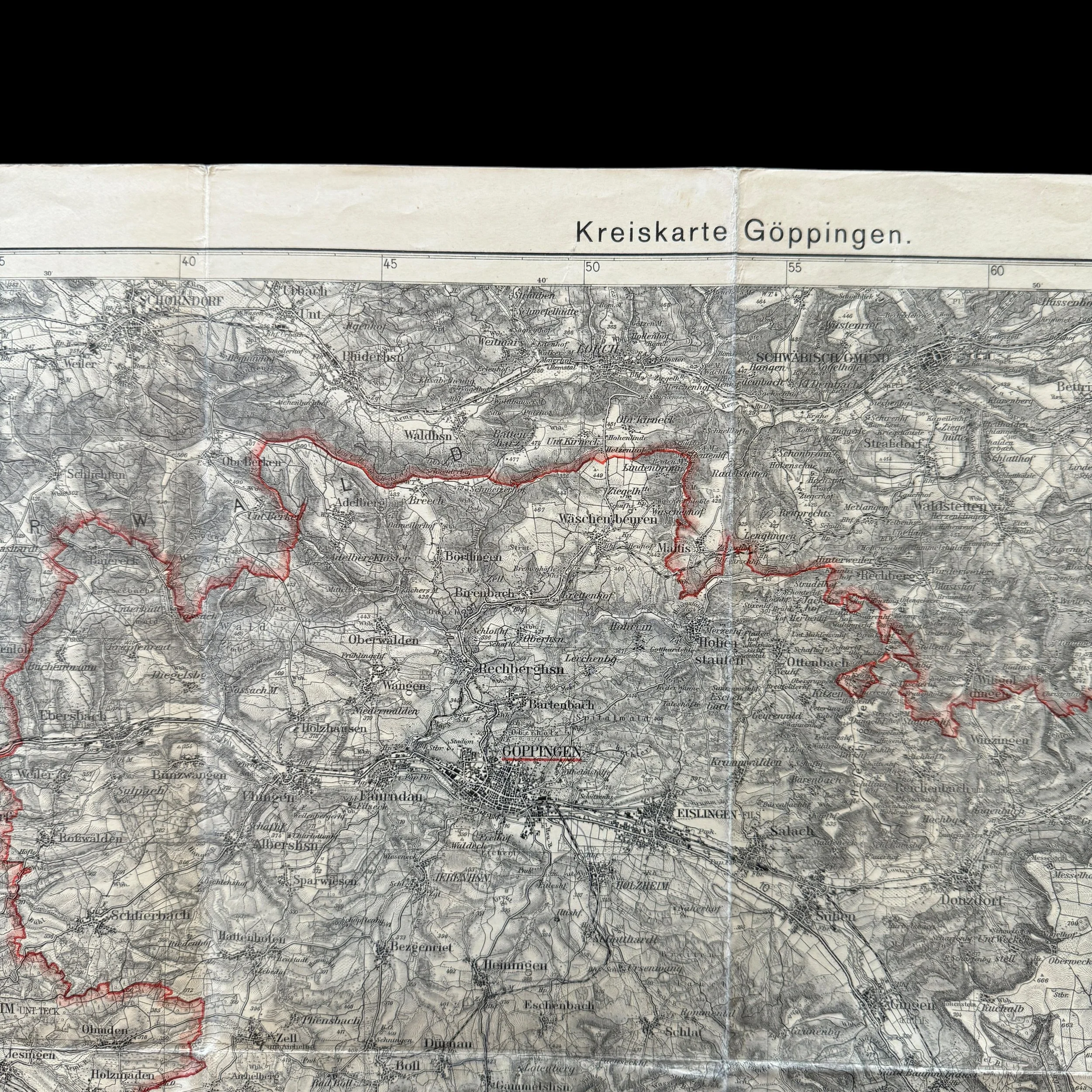Original 1939 WWII Era German District Map of Göppingen*



































Original 1939 WWII Era German District Map of Göppingen*
Comes with a hand-signed C.O.A.
This original WWII era German map of Göppingen shows extensive use and wear. Göppingen, a town in the state of Baden-Württemberg, Germany, played a nuanced and complex role during the period from 1930 to 1945, encompassing the rise of the Nazi regime, the years of World War II, and the eventual defeat of Germany. This period was marked by significant social, economic, and political transformations, and Göppingen's experiences reflect broader trends in Germany during this tumultuous time.
The Pre-War Period (1930-1939)
In the early 1930s, Göppingen, like much of Germany, was deeply affected by the Great Depression. The economic hardship created fertile ground for the rise of extremist political movements, including the National Socialist German Workers' Party (NSDAP). The NSDAP's promise of economic revival, national rejuvenation, and strong leadership resonated with many Germans who were disillusioned with the Weimar Republic's perceived failures.
Göppingen was no exception to this trend. The local population increasingly supported the Nazi party, and by the early 1930s, the NSDAP had established a strong presence in the town. This period saw the infiltration of Nazi ideology into various aspects of public and private life, including education, culture, and social organizations. The regime's propaganda machine was effective in Göppingen, as it was throughout Germany, in fostering a sense of national unity and purpose under Hitler's leadership.
Militarization and Economic Transformation (1933-1939)
Following Hitler's rise to power in 1933, Göppingen, like many other towns in Germany, underwent rapid militarization and economic transformation. The Nazi regime's focus on rearmament and industrialization led to significant investments in infrastructure and production facilities. Göppingen's industrial base expanded, with local factories increasingly being integrated into the war economy.
One of the notable industries in Göppingen was the Märklin company, renowned for its model trains. During the Nazi era, the company adapted to the demands of the regime, producing goods that supported the war effort. The focus on heavy industry and manufacturing was in line with the broader national strategy of preparing for large-scale military conflict. This industrial growth contributed to a reduction in unemployment and an improvement in living standards for some, albeit under an increasingly repressive and militaristic regime.
The War Years (1939-1945)
With the outbreak of World War II in 1939, Göppingen's role in the German war effort intensified. The town's industries were further mobilized to support the needs of the military. Factories in Göppingen produced a variety of goods essential for the war, including machinery, weapons components, and other military supplies. The labor force was subjected to strict regulations, and the town, like much of Germany, saw an influx of forced laborers from occupied territories.
The social fabric of Göppingen was profoundly affected by the war. The local population faced the constant strain of air raids, rationing, and the ever-present fear of loss and death. Göppingen's men were conscripted into the military, and the town experienced the pain of casualties and the impact of returning soldiers who were wounded or traumatized by the war.
Göppingen also became a site of Nazi oppression. The regime's policies of persecution and genocide against Jews, political dissidents, and other marginalized groups reached into every corner of Germany, including Göppingen. The town's Jewish population faced deportation and extermination, reflecting the broader horrors of the Holocaust.
Strategic and Military Significance
While Göppingen itself was not a major military headquarters or a site of pivotal battles, its contribution to the German war effort was significant due to its industrial capacity. The town's factories supported the logistical and material needs of the Nazi military machine. The production of machinery and components in Göppingen helped sustain the prolonged conflict, which required vast amounts of resources and industrial output.
The location of Göppingen also played a role in its strategic importance. Situated in southern Germany, the town was relatively shielded from the initial waves of Allied bombing that targeted the industrial heartlands in the north and west. However, as the war progressed and Allied air raids intensified, Göppingen, like many other towns, suffered from bombing campaigns that aimed to cripple Germany's industrial and transportation infrastructure.
The End of the War and Aftermath (1945)
By 1945, Göppingen, like the rest of Germany, was facing the inevitable defeat of the Nazi regime. The town experienced the chaos and destruction that accompanied the final months of the war. As Allied forces advanced, Göppingen was eventually occupied, leading to the collapse of Nazi authority and the beginning of a new chapter in its history.
The aftermath of the war saw Göppingen, along with the rest of Germany, undergoing a process of denazification and reconstruction. The town's infrastructure, damaged by bombing and the general devastation of the war, had to be rebuilt. The transition from a war-focused economy to peacetime was challenging, but it marked the beginning of a period of recovery and renewal.
Göppingen's experience during the period from 1930 to 1945 reflects the broader trajectory of Germany under Nazi rule and during World War II. The town's initial support for the Nazi regime, its industrial contributions to the war effort, and the suffering endured by its population illustrate the multifaceted impact of this era. Göppingen's history during these years serves as a microcosm of the larger national narrative, marked by the rise and fall of a regime that brought both temporary economic revival and profound human tragedy. As such, the town's story is an essential part of understanding the complex history of Germany during the mid-20th century.